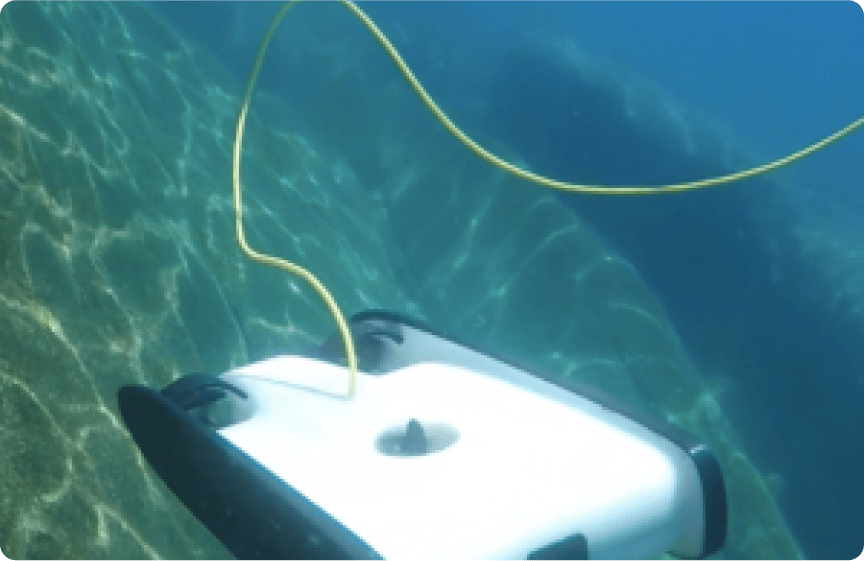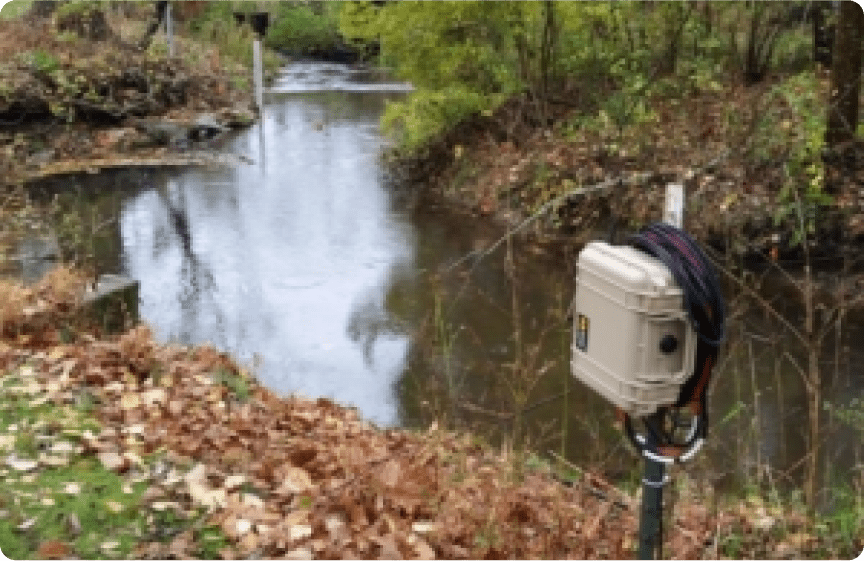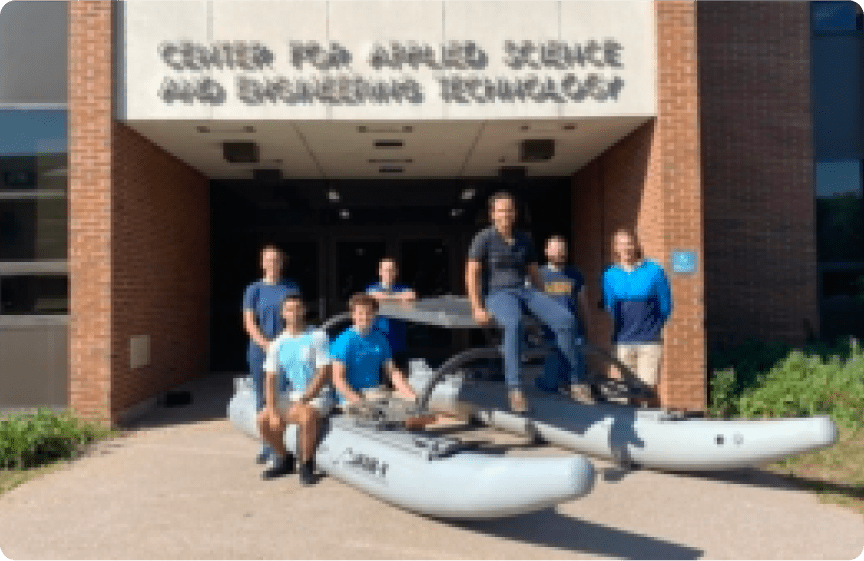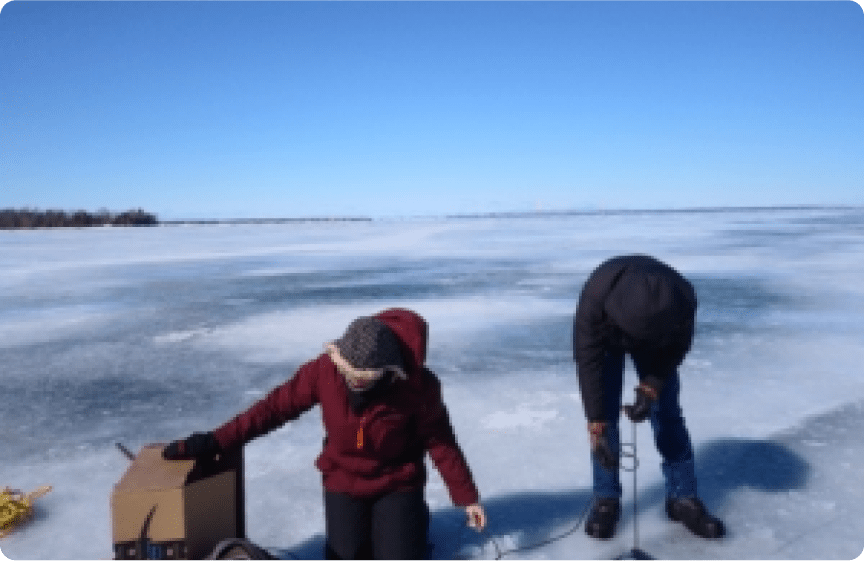CFRE utilizes advanced, groundbreaking technology to study the Great Lakes. Learn more about the technology used below.
Aquatic remotely operated vehicles (ROVs) and autonomous underwater vehicles (AUVs) allow exploration of new areas and collection of data in ways that previously were not available to researchers. A CFRE student and faculty are planning to use our Trident ROV to locate Lake Sturgeon in the St. Marys River and collect water quality data using sensors attached to the ROV.
This project will help guide future efforts to capture Lake Sturgeon by identifying locations with high densities of fish, thereby increasing the efficiency of labor-intensive netting and set-lining surveys.

CFRE’s MiWaterNet is a regional network of affordable water sensors that provide real-time data on water quality and hydrology across wadeable streams throughout Northern Michigan.
Data will be available for natural resource managers and scientists to gain current information on stream and river conditions across the region and to detect changes associated with watershed management practices and climate change.

Unmanned Surface Vehicles (USVs) enable operations and data collection on the water without the need of a human on board. Such operations include fully autonomous or remotely controlled missions.
The Wave Adaptive Modular Vessel is a 16ft long catamaran style USV that is used at CFRE to launch and deploy sensors and external systems in the water autonomously. This type of technology also enables robotics engineering research on path planning, navigation, and control, while allowing students to be trained in the art and science of unmanned maritime vehicle development.

Hydrophones can be deployed to detect and differentiate sound underwater. Such technology allows for localization of sound sources, in addition to the detection of different mediums underwater.
The School of Engineering and Technology has developed a method to detect oil trapped beneath the ice based on reverberation time; a hydroacoustic approach that requires an impulsive sound source in conjunction with a hydrophone to detect such sound. This method was recently tested in the straits of Mackinac.
